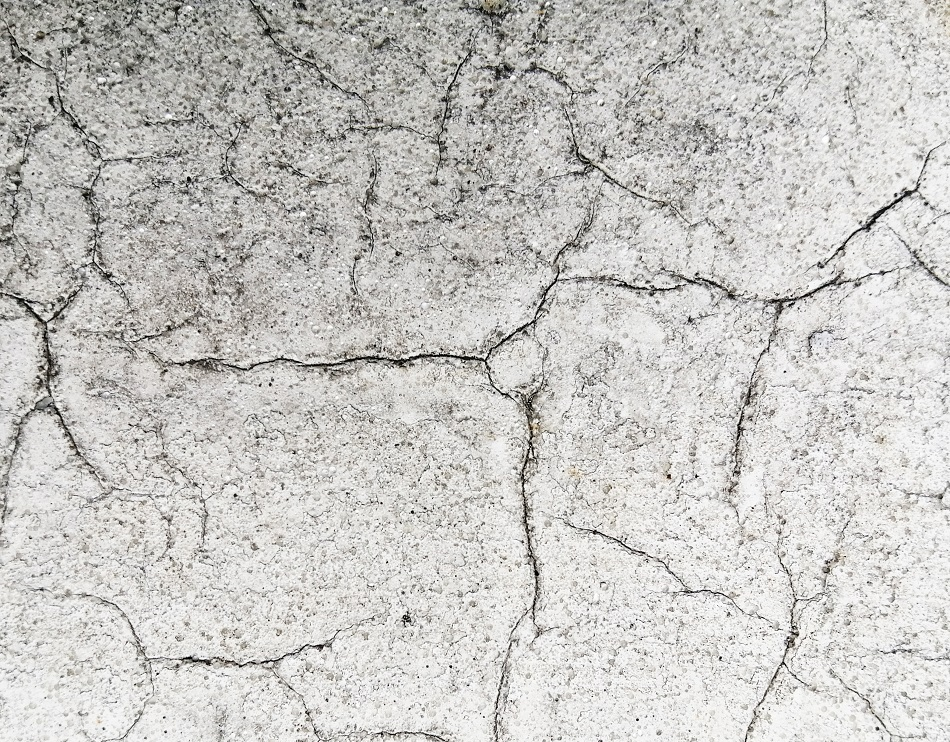
Image Credit: roroto12p/Shutterstock.com
'Microcracking' is the term used to describe networks of cracks in concrete that are so small, they are not visible without magnification. Microcracking transpires as a normal side effect of cement hydration, brought on by large variation in structural qualities of constituents, as a result of large compressive loads and as a result of movement caused by thermal shifts or shrinking.
In the long-term, large visible cracks may come from the slow propagation microcracking. This outcome of microcracking, often brought on by temperature shifts, is a major area of worry for those who work with concrete structures. On the other hand, study has indicated that microcracks permit the compression of concrete, indicating it’s not as stiff a material as some might think.
Microcracks can become large stress cracks or thermal-stressed cracks after the hardening process. Therefore, increases in microcrack density that often occur during the early phase of curing may impact the long-term integrity of concrete structures. Moreover, the formation of cracks during curing can have negative effects on concrete because it is most prone to ecological effects during curing, as opposed to when it is completely hardened. If extreme temperature conditions cause the development of further cracking, procedures should be used to not just manage temperature differential, but also overall temperature shifts.
Microcracking harms durability and may allow for water and chemical seepage into the concrete. While water passing through these small cracks moves slowly, the greater the degree of microcracking, the more potential there is for seepage. This issue is especially critical if chloride ions in the water can reach reinforcing steel within the concrete, causing corrosion issues.
Constituent Variation and the Interface Zone
Undesirable variation in concrete constituents is a primary cause of microcracking, with cracks establishing at the border between mortar and aggregate. Once initiated, microcracking follows this “interface zone”.
Pozzolana and silica fume can be incorporated into concrete to bolster an interface zone. When pozzolana is combined with concrete, the structural integrity of the interface zone is higher as a result of a secondary reaction between pozzolana and existing calcium hydroxide. Silica fume is an effective additive as well, being much finer concerning particles of cement.
Structure of the interface zone at a microscopic level is influenced by the mineralogical qualities of fine aggregate as well, particularly when they are highly chemically reactive. For example, the chemical reaction between limestone and cement paste produces a dense interface zone.
One kind of lightweight aggregate has a dense outer layer, and the interface zone associated with this kind of aggregate is like that of concrete with of moderate-weight aggregate. If the exterior of lightweight aggregate is less dense and more porous, ions are more prone to connect to the exterior, which can result in the development of a denser interface zone, due to improved mechanical bonding between hydrated cement and aggregate.
Microcracking During Repairs
Demolition-related actions may result in microcracking, making it more likely for bigger cracks to establish and subsequent repairs to fail. Using impact tools to remove concrete may cause small-scale microcracking to the exterior of concrete left behind. If a layer is damaged and not removed, it could create a fragile tier in the concrete just under the repair line. If this occurs, the repair will fail over time as a result of a failure inside the base material.
To keep this from failure from taking place, the remaining concrete ought to be treated with secondary technique, like blasting with sand or high-pressure water, to get rid of any remaining damaged material. Cutting around the concrete that is to be removed can also reduce microcracking that might be caused by demolition or removal techniques.
Sources and Further Reading
Disclaimer: The views expressed here are those of the author expressed in their private capacity and do not necessarily represent the views of AZoM.com Limited T/A AZoNetwork the owner and operator of this website. This disclaimer forms part of the Terms and conditions of use of this website.